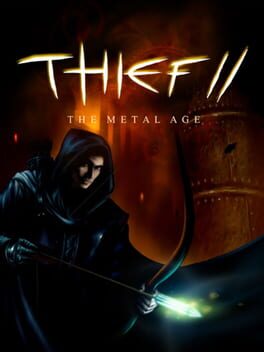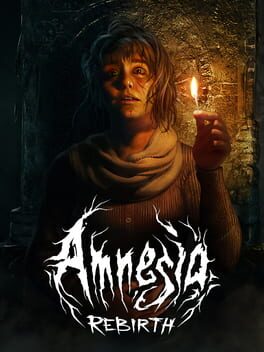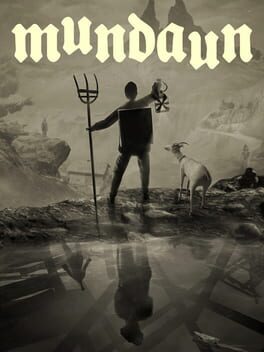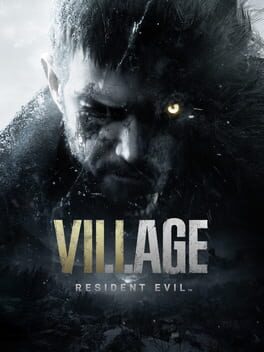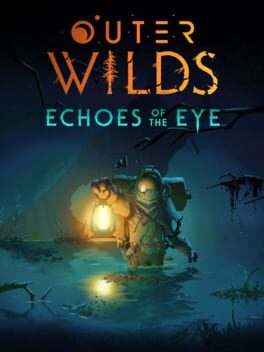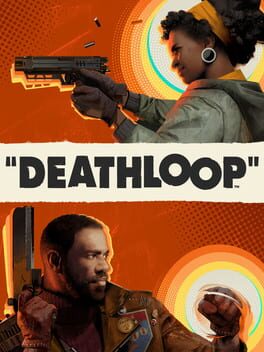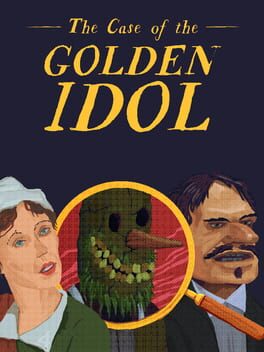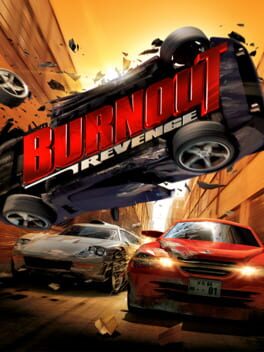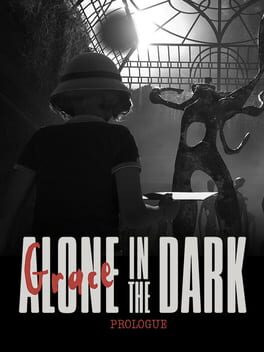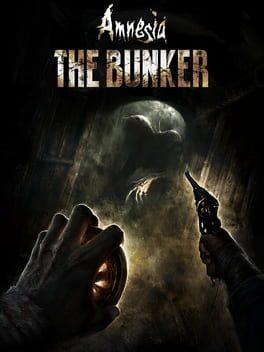Thief II's sound design creates such a strong sense of space that despite the blocky geometry and stark baked lighting, this really holds up in 2021. Coming from Dishonored, which was fluid & freeform, Thief initially alienated me with its focus on moment to moment movement across mere inches of floorboards, stone & carpet. Each level could be its own world and sneaking through hidden passages, between shadows over soft & hard surfaces has a beautiful rhythm.
The houses drew me in the most, especially the labyrinthine mansions with self-contained stories hidden in basements and attics, each mostly staffed by a bunch of drunk idiots. There is lore here that I couldn't follow and a vague plot I didn't care for, but the brief encounter with the robotic child was the most disquieting shit in recent memory.
Thief is a cat burglar simulator, so doesn’t really capture the sense of overwhelming doom that poverty instills in you (see Pathologic 2 for this), but Garret says his rent is late and I believe him. How often do game characters really worry about money? I usually despise loot hunting, as it sends me into anxious spirals (I flinch at glimpses of numerous pots or crates upon entering a new room in Skyrim) but the treasures here are so sparsely placed and mysterious, that I went through enormous strain to gather everything so Garret could pay his rent and spare a little for water arrows.
Fan missions are worth mentioning, as two decades worth of levels are there to download, many twisting the old tech in strange new ways. The campaign Thief 2x offers some glimpses of Hitman’s hierarchy of public & private spaces, which could have been an interesting direction for the series to take if it hadn’t become whatever bland cinematic experience Th4ef was.
The houses drew me in the most, especially the labyrinthine mansions with self-contained stories hidden in basements and attics, each mostly staffed by a bunch of drunk idiots. There is lore here that I couldn't follow and a vague plot I didn't care for, but the brief encounter with the robotic child was the most disquieting shit in recent memory.
Thief is a cat burglar simulator, so doesn’t really capture the sense of overwhelming doom that poverty instills in you (see Pathologic 2 for this), but Garret says his rent is late and I believe him. How often do game characters really worry about money? I usually despise loot hunting, as it sends me into anxious spirals (I flinch at glimpses of numerous pots or crates upon entering a new room in Skyrim) but the treasures here are so sparsely placed and mysterious, that I went through enormous strain to gather everything so Garret could pay his rent and spare a little for water arrows.
Fan missions are worth mentioning, as two decades worth of levels are there to download, many twisting the old tech in strange new ways. The campaign Thief 2x offers some glimpses of Hitman’s hierarchy of public & private spaces, which could have been an interesting direction for the series to take if it hadn’t become whatever bland cinematic experience Th4ef was.
2020
Early in the game, Rebirth takes you through a free-roam fort occupied by a single creature that, while very scripted, haunts you as you venture from blinding desert light into dark structures around a central courtyard - almost Resident Evil like in nature. Unfortunately nothing else really lived up to this sequence for me.
Frictional’s Thomas Grip describes their ‘SSM framework’ approach to horror games as the overlap and interaction between systems, story, and the player’s ensuing mental model of these. Via removal of any ‘fun’ combat interactions, randomizing difficulty after each death, limited inventory management and prioritizing narrative, this has worked well for them so far (and unfortunately spawned clones that didn’t do the formula justice). After SOMA (which I found to be their strongest work to date) Amnesia Rebirth dwindles in repetitive monster encounters and a world always in movement, that constantly discards any sense of place or natural geography. Upon this they've layered a heavily scripted sentimental narrative that suffocates the gameplay - with Tasi’s constant comments, taking away control of the player and often placing full-screen illustrated flashbacks over your view.
I really wanted to immerse myself in the events occurring in the present, which is something SOMA succeeded at. Instead the focus was on collecting matches, hiding in monotonous caves and enduring your screen flashing shit at you as you lose your sanity, while the narrative slowly crept in, gnawing away in the background. The finale was great though, allowing you to make choices entirely through gameplay, that highlights how most games only allow for choices to be made through dialogue selection. Hopefully this will be further fleshed-out in future (though I understand the consequences this would have on budget/labour etc.).
Frictional’s Thomas Grip describes their ‘SSM framework’ approach to horror games as the overlap and interaction between systems, story, and the player’s ensuing mental model of these. Via removal of any ‘fun’ combat interactions, randomizing difficulty after each death, limited inventory management and prioritizing narrative, this has worked well for them so far (and unfortunately spawned clones that didn’t do the formula justice). After SOMA (which I found to be their strongest work to date) Amnesia Rebirth dwindles in repetitive monster encounters and a world always in movement, that constantly discards any sense of place or natural geography. Upon this they've layered a heavily scripted sentimental narrative that suffocates the gameplay - with Tasi’s constant comments, taking away control of the player and often placing full-screen illustrated flashbacks over your view.
I really wanted to immerse myself in the events occurring in the present, which is something SOMA succeeded at. Instead the focus was on collecting matches, hiding in monotonous caves and enduring your screen flashing shit at you as you lose your sanity, while the narrative slowly crept in, gnawing away in the background. The finale was great though, allowing you to make choices entirely through gameplay, that highlights how most games only allow for choices to be made through dialogue selection. Hopefully this will be further fleshed-out in future (though I understand the consequences this would have on budget/labour etc.).
2021
Munduan feels as if it is held together by tape and will unravel at any moment. Movement and animations stop and start with sharp twitches and weapons shiver in your hands. The hand-drawn textures wrap around the low-poly world with uncomfortable tension, like crude sketches over cardboard backdrops.
Exploration of the world evokes Highway 17 meets Resident Evil. Instead of a buggy you commandeer a janky old harvester and instead of safe rooms you take refuge in safe houses, welcoming spaces for brewing coffee and tending to your journal. Creatures wander the landscape in a quaint manner, almost like mobs populating 90s platformers (recalling my childhood fear of evading the enemies of Croc 2 or Gex).
Supernatural events take shape in the world in the form of optical illusions, animated shadows and altered reflections, taking a similar approach to the hard artificial limitations of the artwork. The sound design gives texture to every object in your inventory, and the soundscape of the mountains is full of ambient winds and eerie stillness. “Close up sounds” (according to their sound designer) bring to life paintings and photos(?) found in the world, hinting at muffled voices from the past.
Exploration of the world evokes Highway 17 meets Resident Evil. Instead of a buggy you commandeer a janky old harvester and instead of safe rooms you take refuge in safe houses, welcoming spaces for brewing coffee and tending to your journal. Creatures wander the landscape in a quaint manner, almost like mobs populating 90s platformers (recalling my childhood fear of evading the enemies of Croc 2 or Gex).
Supernatural events take shape in the world in the form of optical illusions, animated shadows and altered reflections, taking a similar approach to the hard artificial limitations of the artwork. The sound design gives texture to every object in your inventory, and the soundscape of the mountains is full of ambient winds and eerie stillness. “Close up sounds” (according to their sound designer) bring to life paintings and photos(?) found in the world, hinting at muffled voices from the past.
Village is a chaotic melding of its past entries, but there is a much stronger sense of pacing and flow here than in 7 - including constant reorientation of what spaces are safe and a more expansive, looping geography. The RE engine (reach for the moon engine?!) has such a beautiful physicality to it, with indulgent texture work & photogrammetry so lifelike that at times it feels like a flimsy/over adorned set of a Hammer film - further layers of artifice mirroring the genre mashup at its core.
A sense of long term consequences haunted earlier RE titles and this is the main area I found Village is lacking. Boss enemies in Village do little to shift how you play (eg. the Licker in RE2 limited when you made noise, Crimson Heads in the REmake forced you to consider returning to cleared areas). As this entry shows they are gesturing to their past confidently, I hope they consider returning to some of these dynamics in the future.
A sense of long term consequences haunted earlier RE titles and this is the main area I found Village is lacking. Boss enemies in Village do little to shift how you play (eg. the Licker in RE2 limited when you made noise, Crimson Heads in the REmake forced you to consider returning to cleared areas). As this entry shows they are gesturing to their past confidently, I hope they consider returning to some of these dynamics in the future.
Maintains the sublime terror of embodying a fragile being at the whims of an uncaring universe (and a sense of scale only achieved elsewhere by Shadow of the Colossus or Subnautica), especially in the central sequence evoking a visceral moment in Clarke’s Rendezvous with Rama.
I did find later sections incredibly opaque, as my idiot brain couldn’t parse where and when I was, let alone solve the core puzzles. Mechanics are introduced generously, but it is often unclear when and why to use them (especially compared to the stark, illuminating reveals of the main game).
Otherwise this is still the same alluring hostile universe, filled with brief moments of warmth, and one of the only games that feels this way.
I did find later sections incredibly opaque, as my idiot brain couldn’t parse where and when I was, let alone solve the core puzzles. Mechanics are introduced generously, but it is often unclear when and why to use them (especially compared to the stark, illuminating reveals of the main game).
Otherwise this is still the same alluring hostile universe, filled with brief moments of warmth, and one of the only games that feels this way.
2021
This isn’t the clockwork worlds of Outer Wilds or Hitman. Major decisions don’t so much as ripple through the day, but update the mind-map buried in the UI. The smooth movement and honeycombed worlds are occasionally up there with Dishonored, but the enforced repetition renders them lifeless after a few loops, as you slowly unpack how each location is little more than shifting closed off areas, altered set-dressing and enemy placement.
Certain events (the party) beg to be explored through some form of social stealth - but your main means of interacting with the world is a gun - so you just linger in the attic, looking for an opportunity. Puzzles also feel arbitrary - as Colt figures out nearly everything before you do & the information gathered often comes down to hacking door codes and computer terminals.
The sharp contrast between historical neighbourhoods and the decadent pop-facades echo Bioshock Infinite’s automatons rather than Dishonored’s lived in world. Targets are kept at a distance and from what little I learned of them through the playful but often obnoxious writing, I ultimately couldn’t find a reason to care.
Certain events (the party) beg to be explored through some form of social stealth - but your main means of interacting with the world is a gun - so you just linger in the attic, looking for an opportunity. Puzzles also feel arbitrary - as Colt figures out nearly everything before you do & the information gathered often comes down to hacking door codes and computer terminals.
The sharp contrast between historical neighbourhoods and the decadent pop-facades echo Bioshock Infinite’s automatons rather than Dishonored’s lived in world. Targets are kept at a distance and from what little I learned of them through the playful but often obnoxious writing, I ultimately couldn’t find a reason to care.
2022
A lonely journey through ruins punctuated by dense trials in honeycombed dungeons. What (obviously) distinguishes this for me from previous Souls entries is the ability to stray from the Light of Grace and just wander through the vast overworld and navigate the winding geography in an almost frictionless manner, then return to the dungeons when I have recovered my courage (usually with the added warmth of a friend guiding or being guided through the labyrinths).
It isn’t really the bosses or combat that draws me to this series, but the perpetual sense of a larger world, of meaning and history, just beyond your grasp - a sense of mystery evocative of Gene Wolfe’s New Sun or Harrison’s Viriconium. This isn’t a living world in a Skyrim sense - there are few areas that evoke a bustling town or real city, and like Souls games before, this feels like playing through a myth, with unusual characters guiding you, withholding information from you, tricking you.
If you are fatigued by From's work, this may not be the one to bring you back. Occasional repetition of bosses can at times reveal a game outreaching its ambition, of assets stretched too far, but so many encounters constantly wake you up and undermine your sense of how the world works. The map grows, above and below ground, and never offers a complete image of the world and its secrets.
It isn’t really the bosses or combat that draws me to this series, but the perpetual sense of a larger world, of meaning and history, just beyond your grasp - a sense of mystery evocative of Gene Wolfe’s New Sun or Harrison’s Viriconium. This isn’t a living world in a Skyrim sense - there are few areas that evoke a bustling town or real city, and like Souls games before, this feels like playing through a myth, with unusual characters guiding you, withholding information from you, tricking you.
If you are fatigued by From's work, this may not be the one to bring you back. Occasional repetition of bosses can at times reveal a game outreaching its ambition, of assets stretched too far, but so many encounters constantly wake you up and undermine your sense of how the world works. The map grows, above and below ground, and never offers a complete image of the world and its secrets.
2019
Feeling small, the weight of your body and cargo shifting moment to moment, you wander through landscapes with a real sense of scale and elemental menace. Marking out your favourite routes, you build up memories of the texture of the earth and the incline of the terrain. America has been swallowed by a rift in deep time, emerging as (Iceland?!) a volcanic wasteland haunted by the dead. Tethered to others via ghostly gestures and transient structures, every trip has an eerie loneliness that rises in waves.
The closer this gets to Metal Gear, the more it fumbles, especially with movement a little too clumsy for combat. Spectral and human entities are at their most affecting when glimpsed just out of sight or over the horizon, often throwing off your concentration for a moment, resulting in hilarious mistakes. The deliveries are (mostly) emptied out of significant narrative content or reward, a minimalism that just leaves you alone with the landscape.
The closer this gets to Metal Gear, the more it fumbles, especially with movement a little too clumsy for combat. Spectral and human entities are at their most affecting when glimpsed just out of sight or over the horizon, often throwing off your concentration for a moment, resulting in hilarious mistakes. The deliveries are (mostly) emptied out of significant narrative content or reward, a minimalism that just leaves you alone with the landscape.
2022
45 minutes trapped in a tin can deep within an alien ocean feels like an escape after so many all-encompassing open-worlds. The minimalist interface and sensory deprivation leaves much of the experience to suggestion and, despite a few goofy scares, the photography mechanic leaves you with an effective impressionistic, grainy view of the exterior void, always kept at a murky distance. The overtly grim-dark world feels akin to the Riddick or Alien universes, crushing corporate dystopias of purgatorial suffering.
2022
What makes Pentiment more than an interactive Name of the Rose is the expansion of the narrative over multiple time-scales, with decisions echoing throughout days, seasons and decades. While Rose is confined to a few days, taking place in “real time”, Pentiment expands further through time (and space, from within the abbey and then out into the surrounding village). The narrative momentum gradually slows to a haunting, sad resolution.
Similar to Pathologic 2, time is against you, and no mystery is ever fully resolved. With the little info collected in your investigations, the truth is always incomplete, and a lingering guilt is cast over your decisions. Unlike Patho 2, time progresses in an abstracted way: during the day you may talk to anyone you find, but engaging in work, meals or certain events will advance time. There is no real-time simulation of the town, but the ever-changing seasons, events, architecture and people give Tassing the illusion of an analog, living world that many ‘dynamic’ open-worlds struggle to evoke.
I was initially put off by the art direction, akin to contemporary animation like Song of the Sea/Secret of Kells (which director Josh Sawyer has mentioned as an early influence) and I was looking for something uglier, maybe closer to the work found within the manuscript’s margins. Ultimately, this does lend a more expressive, readable quality to the characters and world.
Similar to Pathologic 2, time is against you, and no mystery is ever fully resolved. With the little info collected in your investigations, the truth is always incomplete, and a lingering guilt is cast over your decisions. Unlike Patho 2, time progresses in an abstracted way: during the day you may talk to anyone you find, but engaging in work, meals or certain events will advance time. There is no real-time simulation of the town, but the ever-changing seasons, events, architecture and people give Tassing the illusion of an analog, living world that many ‘dynamic’ open-worlds struggle to evoke.
I was initially put off by the art direction, akin to contemporary animation like Song of the Sea/Secret of Kells (which director Josh Sawyer has mentioned as an early influence) and I was looking for something uglier, maybe closer to the work found within the manuscript’s margins. Ultimately, this does lend a more expressive, readable quality to the characters and world.
Charming, crude art direction and ludicrous situations carry this further than expected. The deduction gameplay builds on Obra Dinn in a way that is a little more focused in its structure, progressing linearly through puzzles, so it doesn’t quite suffer from the slight meandering final third of Dinn (that was a little too freeform for its own good).
I do think the more heightened, fantastic scenarios lose their lustre quite quickly, and I did prefer the earlier, more ‘grounded’ puzzles. A mystery needs gaps, intrigue, momentum, and I found most of the later scenes convoluted in a profoundly absurd way, though really funny.
The reliance on discovering words to describe the scenarios also leads to a lot of studying crucial documents to solve logic puzzles, and Obra Dinn’s minimalist focus on studying the scenes (faces, poses, props), without any documents to provide exposition, was felt missing here.
I do think the more heightened, fantastic scenarios lose their lustre quite quickly, and I did prefer the earlier, more ‘grounded’ puzzles. A mystery needs gaps, intrigue, momentum, and I found most of the later scenes convoluted in a profoundly absurd way, though really funny.
The reliance on discovering words to describe the scenarios also leads to a lot of studying crucial documents to solve logic puzzles, and Obra Dinn’s minimalist focus on studying the scenes (faces, poses, props), without any documents to provide exposition, was felt missing here.
2005
This is a fourteen-year-old’s fever dream after glimpsing a poster for fast & furious: no characters, real cars, stakes, narrative, just a visceral piss-colour-graded world tour that could only have emerged from a series building upon itself in isolation without any real-world reference: an automotive dream-world, an underworld to Forza’s sunny utopia.
I yearn for a timeline where Burnout wasn’t abandoned, and for tracks full of character to remain at the core of the arcade racer experience. Despite tech advancements, even Paradise didn’t quite capture the off-kilter energy of Criterion’s peak of Takedown and Revenge.
I yearn for a timeline where Burnout wasn’t abandoned, and for tracks full of character to remain at the core of the arcade racer experience. Despite tech advancements, even Paradise didn’t quite capture the off-kilter energy of Criterion’s peak of Takedown and Revenge.
2023
Was initially worried this was a little redundant after Village and questioned if 4 really needed an update. Ultimately I found this a great time. The combat (once I got a handle on the melee mechanics) is consistently tense and tangible, with the chaotic shifting from crowd control to one-on-one parrying. I loved the almost immersive-sim interactions between enemies causing emergent chaos.
I cared little about the narrative changes as I literally played the PS2 release, so all is a foggy memory, but from what I could recall, I was consistently surprised by moments rearranged, recontextualised. Yes, the island is serviceable compared to the village/castle, but I enjoyed the grungy interiors and the big-boi regenerador sequence. Of all the boss changes, Krauser was a big standout, a metal-gear tier fight.
A few changes I was less happy with (most are hangovers from the recent REmakes): the lack of laser targeting for all weapons, the change from the semi-detached aiming system & less variety of interactive objects u could shoot. RE4 felt so revolutionary as a horror/shooter at the time due to how the gun felt like a tactile tool, taking out doors, knees & plucking weapons from the air. Much of this is still here, but a little stripped down (tho with some new additions, including rampaging farm animals).
Where does Resi go now? Village and R4MAKE have converged, and hopefully they don’t just fall back down into the slump of 5 & 6 (though 5 remake is inevitable lol) Hopefully a complete rebirth like 7 is on the cards. Capcom pls.
I cared little about the narrative changes as I literally played the PS2 release, so all is a foggy memory, but from what I could recall, I was consistently surprised by moments rearranged, recontextualised. Yes, the island is serviceable compared to the village/castle, but I enjoyed the grungy interiors and the big-boi regenerador sequence. Of all the boss changes, Krauser was a big standout, a metal-gear tier fight.
A few changes I was less happy with (most are hangovers from the recent REmakes): the lack of laser targeting for all weapons, the change from the semi-detached aiming system & less variety of interactive objects u could shoot. RE4 felt so revolutionary as a horror/shooter at the time due to how the gun felt like a tactile tool, taking out doors, knees & plucking weapons from the air. Much of this is still here, but a little stripped down (tho with some new additions, including rampaging farm animals).
Where does Resi go now? Village and R4MAKE have converged, and hopefully they don’t just fall back down into the slump of 5 & 6 (though 5 remake is inevitable lol) Hopefully a complete rebirth like 7 is on the cards. Capcom pls.
A very minor experience demonstrating Alone in the Dark may turn out to be a solid early 2010s AA release with a heart, complete with unnerving dead-eyed character models (look at Grace in the poster!), some real iffy contextual interactions (the stairs lol) and plodding movement. With Mikael Hedberg (SOMA) writing, I'm still looking forward to the full game and am curious about how they'll blend the surreal southern gothic tone with the creature-feature aspects, which are a little clumsily combined here.
2023
fumbling in the dark
The bunker is a smaller, narratively unambitious left-turn for Frictional. While they tinker away with what I assume is a larger, SOMA-like project, here they've shed much of the weight they’ve accumulated over the years, weight that really dragged Rebirth down, and turned their attention back to the moment-to-moment mechanics. They’ve finally confronted the minimalistic hide-and-seek gameplay that has become increasingly tired, and re-embraced tools & limited weapons (last seen in their Penumbra series).
The immersive sim approach to puzzles allows for multiple solutions & is simple and direct: every tool is a key, a distraction or a temporary defense. Combined with the tight, claustrophobic map, the Bunker asks you to build a mental model of the spaces so that you may eventually navigate them with your eyes closed (& with the lights out). Much of the horror is suggested, a threat conjured in the dark.
Another strength of Frictional’s is their HPL engine and its tactile physics system (surprisingly uncommon in a post-half-life 2 world). Pulling at a loose board clumsily, the creaking drawing the creature, has a weight to it that a pre-canned animation couldn’t carry. Like many im-sims, it is the abysmal failures and inexplicable systemic outcomes that stay with you (especially if you survive them), rather than the authored story.
Some may find it a little too stripped-down (along with a rather abrupt, clumsy ending), but after Rebirth’s incessant narration, I’m happy they had the confidence to just leave you in a desolate space of worn concrete and tangled wire and simply ask you to escape alive.
The bunker is a smaller, narratively unambitious left-turn for Frictional. While they tinker away with what I assume is a larger, SOMA-like project, here they've shed much of the weight they’ve accumulated over the years, weight that really dragged Rebirth down, and turned their attention back to the moment-to-moment mechanics. They’ve finally confronted the minimalistic hide-and-seek gameplay that has become increasingly tired, and re-embraced tools & limited weapons (last seen in their Penumbra series).
The immersive sim approach to puzzles allows for multiple solutions & is simple and direct: every tool is a key, a distraction or a temporary defense. Combined with the tight, claustrophobic map, the Bunker asks you to build a mental model of the spaces so that you may eventually navigate them with your eyes closed (& with the lights out). Much of the horror is suggested, a threat conjured in the dark.
Another strength of Frictional’s is their HPL engine and its tactile physics system (surprisingly uncommon in a post-half-life 2 world). Pulling at a loose board clumsily, the creaking drawing the creature, has a weight to it that a pre-canned animation couldn’t carry. Like many im-sims, it is the abysmal failures and inexplicable systemic outcomes that stay with you (especially if you survive them), rather than the authored story.
Some may find it a little too stripped-down (along with a rather abrupt, clumsy ending), but after Rebirth’s incessant narration, I’m happy they had the confidence to just leave you in a desolate space of worn concrete and tangled wire and simply ask you to escape alive.
